Save the Children’s Global Childhood Report conveys a message of hope and progress for children
Children today have a better chance of growing up healthy and educated than at any time in the past two decades. However, the impact of conflict is worse than ever.
Save the Children’s third annual End of Childhood Index compares the latest data from 176 countries and assesses where the most and fewest children are missing out on a proper childhood.
The report looks back to the year 2000 and has found a remarkable story of progress in just one generation. And the most dramatic progress has been among some of the world’s poorest countries.
Here are five key areas where significant progress is being made for the world’s most marginalised children. And one in which the world is clearly failing them.
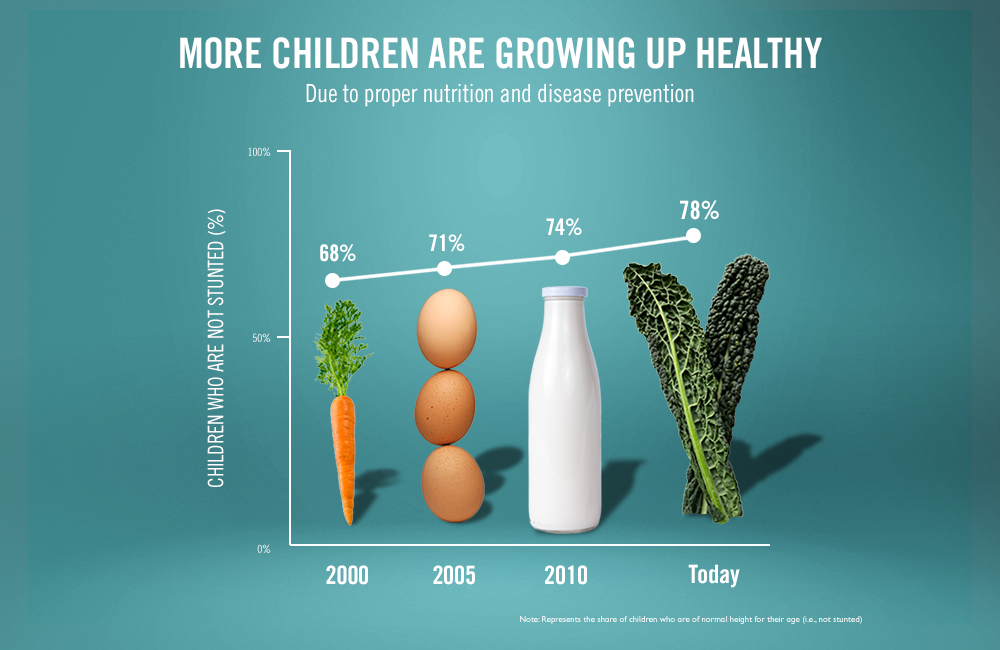
Young children who do not get enough food and nutrients cannot grow properly and can become underdeveloped for their age. This condition is called ‘stunting’ and it prevents children from reaching their full potential – both mentally and physically.
Global stunting prevalence has dropped from 32.5% in 2000 to 21.9% in 2018 (the number of stunted children fell from 198 million to 149 million). This translates to a 33% global decline in stunting.
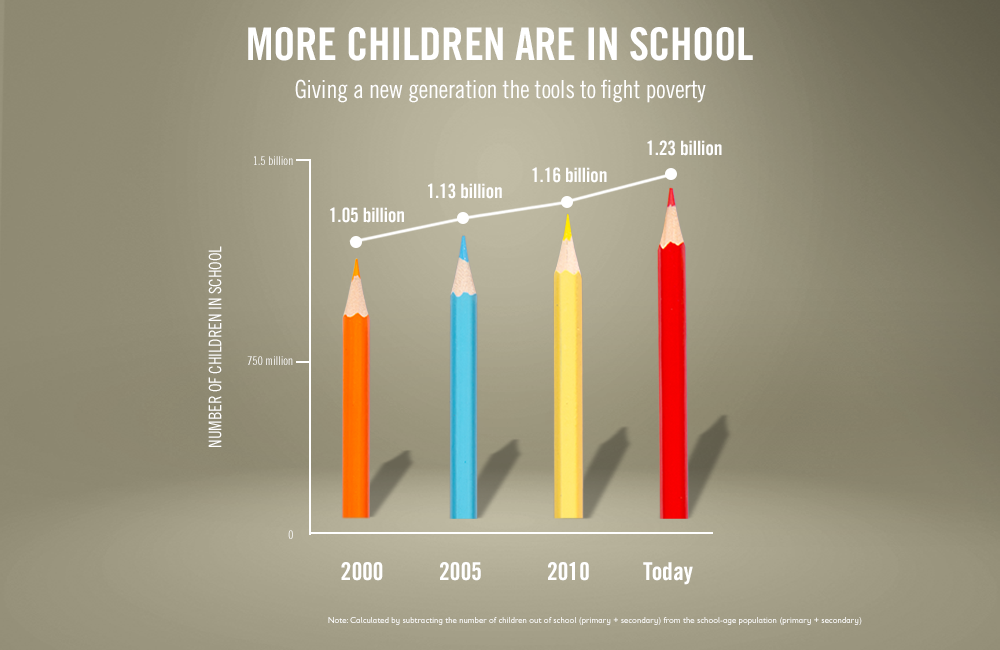
Educating children gives our next generations the tools to fight poverty and prevent disease. It builds confidence, literacy and a stronger foundation for the future we all share. And it’s every child’s right.
From 2000 to 2017, the worldwide number of out-of-school children shrank by nearly 115 million, the rate falling by 33%. Thirty-five countries have cut their out-of-school rates by 50% or more since 2000. During this same period, the number of illiterate youth fell by 42 million, from 144 million to 102 million.
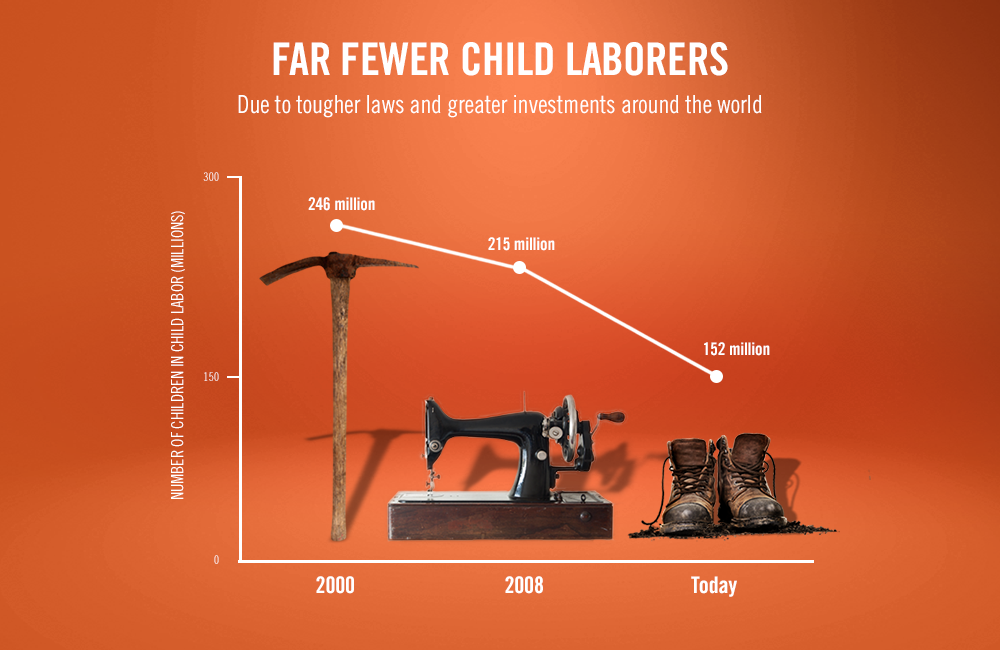
The latest child labour estimates tell a story of real progress and of a job unfinished. Child labour rates have declined dramatically in recent years. Globally, rates are down 40%, and 94 million fewer children are working now than in 2000.
Despite global progress, there are still 152 million children engaged in child labour – nearly 1 in 10 children worldwide – with almost half of them (73 million) in hazardous work that directly endangers their health, safety and emotional development.
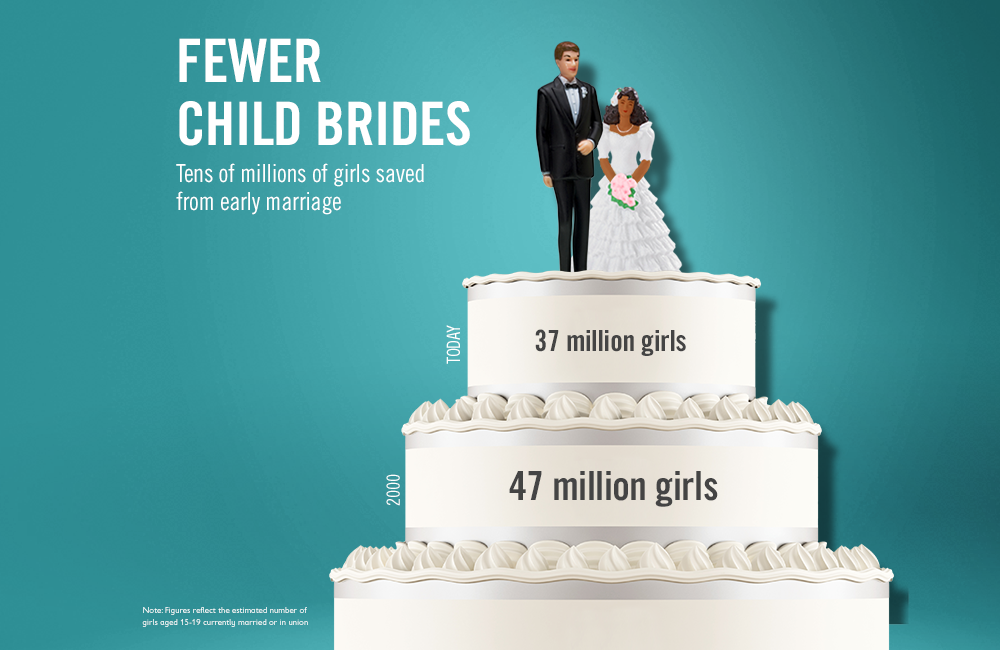
Getting married as a child forces millions of girls into adulthood and motherhood before they are physically and mentally ready. These girls, including many under the age of 15, are often isolated, their freedom curtailed. They frequently feel disempowered and are deprived of their rights to health, education, safety and participation.
Marriage before age 18 is illegal in a growing number of countries and rates are declining around the world. Progress has accelerated in recent years as attitudes change, more girls are educated and governments invest in programs for adolescents. An estimated 25 million child marriages have been prevented in just the past decade.
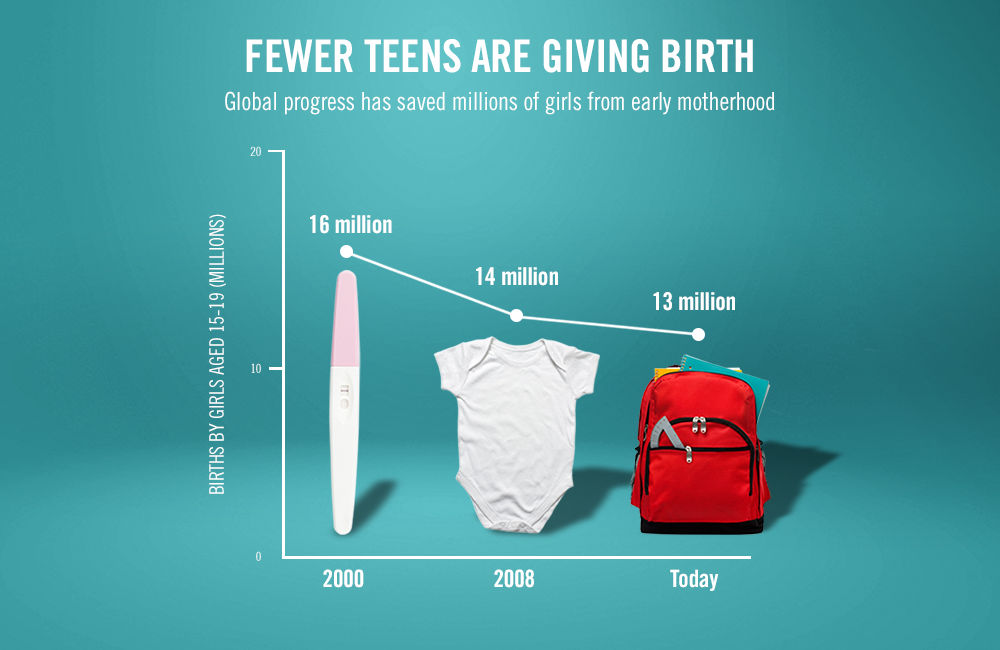
Childbearing at a young age, when a girl’s body is not physically mature enough often leads to devastating consequences. Complications from pregnancy and childbirth are the leading cause of death for adolescent girls between the ages of 15 and 19 globally. And babies born to adolescent mothers face a substantially higher risk of dying than those born to women aged 20 to 24.
In 2000, 16 million girls aged 15 to 19 gave birth. Today, that number has been cut to about 13 million. Very early childbirth (before age 15) appears to be declining in all regions.
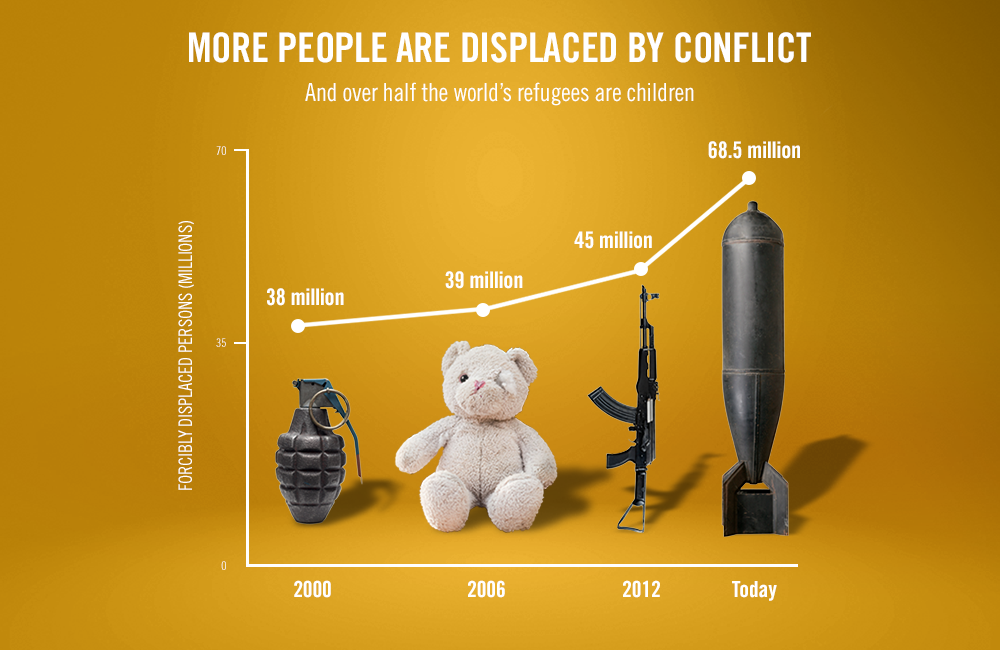
Children make up about 30% of the world’s population, but more than half the world’s refugees are children – a troubling prospect considering the long-term consequences of such suffering among the next generation of adults.
By the end of 2017, an unprecedented 68.5 million people around the world had been forced from their homes as a result of conflict or persecution, including nearly 31 million children. There are also more children living in conflict zones today, and those children are more at risk than at any point in this millennium.